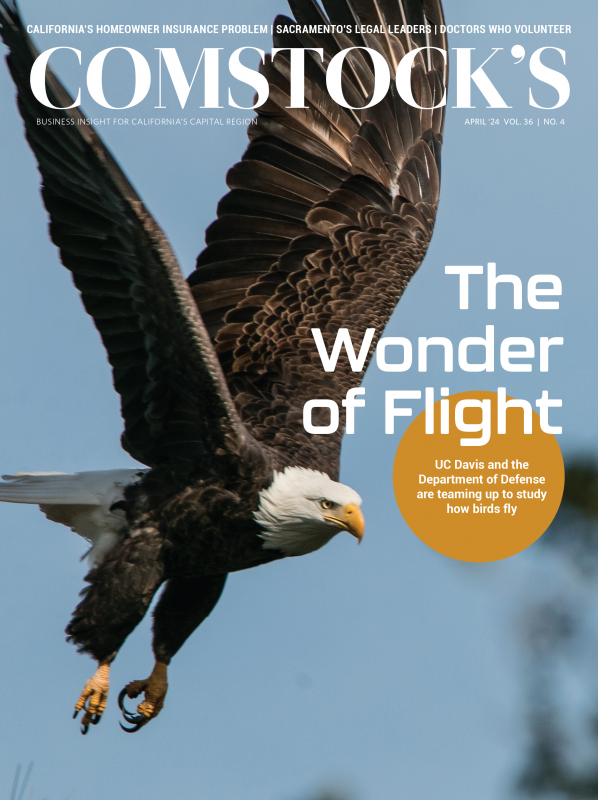Shirley, a 37-year-old mother of two, had been experiencing pain for almost a year from an ovarian cyst before her doctor told her she needed surgery. But she didn’t have insurance, was out of work and couldn’t afford to pay. Her doctor eventually referred her to the SPIRIT program run by the Sierra Sacramento Valley Medical Society, where she could potentially qualify for donated care.
“It was perfect for me,” Shirley said with the help of a translator. “I’m very, very grateful for the service I received, and even though I was getting the surgery for free, they still treated me with a lot of care.”
Now nearing its 30th year, SPIRIT has provided free care to over 55,000 patients in need of cataract surgery, hernia repair and numerous other non-emergency conditions that can still be painful or prevent them from working. All services, including the physician’s time, anesthesia and the hospital or clinical facility, are donated, and patients never receive a bill.
Doctors are known for their long hours and would seem to be busy enough, but Lindsay Coate, SSVMS vice president of strategic options, says many physicians find donating their time a return to the reason they chose medicine as a career.
“They went into medicine to help people,” Coate says. “You know, because somebody can’t afford to get care doesn’t mean they don’t deserve care. I know that with many of the physicians we work with, that’s their thought process.”
Building the network for SPIRIT — the Sacramento Physicians’ Initiative to Reach out, Innovate and Teach — takes some reverse engineering, Coate says.
“We actually started the program with cataracts and hernias. That’s what the entire program was based on,” she says. “We always find the volunteer physician first. They’ll tell us they want to volunteer, and then we have to backtrack to ensure support for whatever service they would like to provide.”
That includes arranging for donated anesthesia while the hospital or surgery center where the physician has privileges must provide the space and ancillary staff. “So it’s kind of a patchwork quilt, if you will, of care that we’ve put together. But it works.”
Dr. Elizabeth Gonzalez, a Sutter Health OB-GYN who performed Shirley’s surgery, said when she was asked to participate in SPIRIT “it was a no-brainer.”
“Yes, it does take time, but it doesn’t feel like it takes time, because it is such a gift that I get,” Gonzalez says. “I get more than I give. I see these women that come into my office, and I can see my grandmother or an aunt in their faces. Sometimes there’s language barriers, and they’re usually scared.”
She says patients who are intimidated by finding health care are often more comfortable with a physician who looks and speaks like they do. Gonzalez says her own American story — she is the daughter of a father from Cuba and mother from Mexico and the first in her family to go to college — drove her into medicine so she could help people. The SPIRIT program allows her to do that but also addresses some of the business of medicine by ensuring physicians have the malpractice coverage they need and a location to provide care. She says many of her SPIRIT patients have suffered from pain or bleeding for months.
“I just had one recently; she was in her mid-40s, and she’d been suffering from pelvic pain for about two years,” Gonzalez says of a patient referred by a local clinic. “She was doing, I think, janitorial work, had no benefits, spoke English — somewhat — and kind of got lost in the system. When she found herself to me, we found out she had a pelvic mass, she needed surgery, and subsequently she’s feeling great. That’s kind of a typical patient.”
Coate says SPIRIT is possible through its partnerships with Dignity Health, Sutter Health, Kaiser Permanente, UC Davis Health and Sacramento County, and that CASE Medical Group donates anesthesia services. Despite the recent expansion of Medi-Cal, a growing number of SPIRIT patients are “in-betweeners” who make too much to qualify for Medi-Cal and either can’t afford insurance or don’t qualify for other reasons. Last year, 389 patients were provided services, including 119 who underwent some sort of surgery. The program also offers colonoscopies and optometry consultations with free glasses to those who qualify.
SSVMS is California’s oldest continually operating medical society, dating back to 1868, and is the largest behind the California Medical Association. It serves more than 6,500 physicians and medical students in Sacramento, Yolo and El Dorado counties. Executive Director Aileen Wetzel says the society was born out of a cholera outbreak in the late 1800s, and that’s one source of its ability to lead in times of crisis, such as when doctors’ livelihoods — and their lives — were threatened by the COVID-19 pandemic.
The Sierra Sacramento Valley Medical Society, which dates back to
1868, runs the Museum of Medical History. A rare iron lung, old
medical devices and these Prohibition-era medicine bottles are
part of the collection.

“COVID-19 challenged the medical community and threatened practices like never before,” Wetzel says. “SSVMS enabled our health care community to focus on medicine by keeping them informed of the latest news, distributing personal protective equipment, communicating a unified message to the public and helping doctors focus on their patients.”
From cholera to COVID, medicine has undergone some dramatic advances since SSVMS began, and that’s apparent at its Museum of Medical History (museumofmedicalhistory.org), located in its offices on Elvas Avenue. The museum is free and is visited by about 1,200 medical students and members of the public annually, who come to see exhibits such as a rare iron lung in working order and Prohibition-era liquor bottles with the pharmacy prescription labels intact. Dosage instructions might suggest to take it with “one tablespoon of water when in distress.”
“We have, and I’m not sure how it survived, the first X-ray tube used in Sacramento,” says Dr. Robert LaPerriere, a retired dermatologist who has been the museum’s volunteer curator for 23 years. “That was in 1897, only two years after X-ray was discovered.”
Dr. Gonzalez says a unique key to SPIRIT’s success are the case managers, Adriana Aguilar and Ana Orejel, who take patients by the hand to help them navigate an often complex health care system. “They follow the patient through my office, and many of them will show up in surgery,” she says. “It’ll be six o’clock in the morning, and there’s Adriana smiling and sitting next to my patient to make sure that the system is smooth for her. It’s beautiful that they invest that time in the patient, and then they follow them afterwards, even reimburse them for any paid medications I call in.”
“They also have the unfortunate pleasure of seeing just how broken our health care system actually is and cobble together care just for these patients,” Coate says. “They just connect with our patients really, really closely and want so desperately to make sure that our patients get the care that they need, because many of them are in pain and unable to work. They get excited when we’re finally able to get somebody into surgery. It’s a celebration for them.”
“My parents didn’t have insurance growing up, and I would always have to translate for them,” Orejel says. “So I’m very familiar with the hurdles that a lot of the population that’s uninsured faces. So seeing culminating cases that do work out when the patients get the care, I feel elated every time.”
Shirley, the mother of two with the ovarian cyst, is recovering from her December surgery and expects to get back to work soon. She says her kids are happy to see her not in pain.
“Before the surgery, I couldn’t really live a normal life because I was in so much pain and discomfort,” Shirley says. “But now I feel like I’m slowly getting my life back. Dr. Gonzalez also kept checking on me, following up and sending messages, so I’m really, really great.”
Get all the stories in our annual salute to women in leadership delivered to your inbox: Subscribe to the Comstock’s newsletter today.
Recommended For You
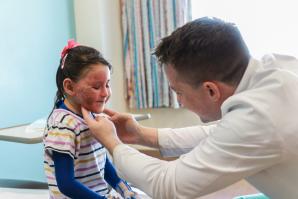
Once a Burn Patient, Now a Burn Surgeon
At Shriners Children’s, Dr. Jason Heard treats critically burned kids like he once was
In light of National Burn Awareness Week, Comstock’s presents a
story of hope and giving back.
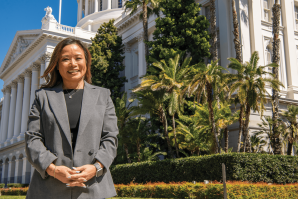
Legal Lions
Between the state Capitol, a federal courthouse and two top-ranked law schools, the Capital Region is a formidable hub for the legal industry
Between schools like McGeorge and UC Davis School of Law, as well as an array of respected firms, the state Capitol and various courts including a federal courthouse, the Sacramento region is a strong draw for the legal industry.
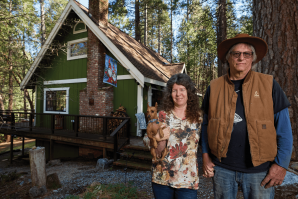
The Soaring Cost of Homeowners Insurance
High prices and carriers leaving the state send homeowners scrambling to protect their homes
California’s insurance crisis is damaging the housing market and more. Will legislators fix it before the next big blaze?

Fly Like an Eagle
The UC Davis California Raptor Center and the Department of Defense are teaming up to create the next generation of unmanned aircraft technology
The new center will utilize motion capture and photogrammetry — which uses photography to determine the distance between objects — to image birds in flight and create 3D models of the wing shapes that will help design uncrewed aerial systems, or UAS.
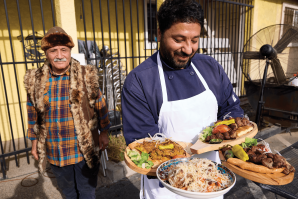
Photo Essay: Afghans Resettling in Sacramento
The Capital Region is home to more than 10,000 Afghan refugees who fled the Taliban. Comstock’s brings you a few of their stories.
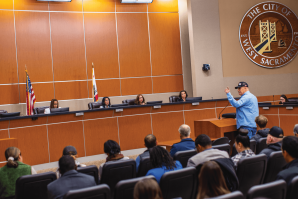
Women Who Represent
More women are running for office and getting elected
The most recent election for West Sacramento City Council has marked a move toward equity — particularly when it comes to female representation. For the first time in history, West Sacramento has an all-female city council and mayor, who are also all women of color.




